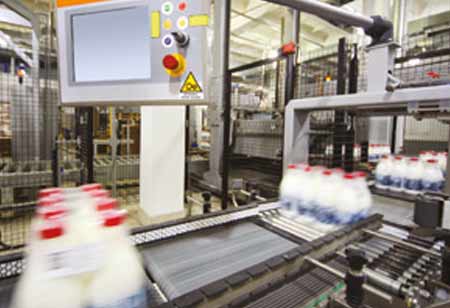THANK YOU FOR SUBSCRIBING
Be first to read the latest tech news, Industry Leader's Insights, and CIO interviews of medium and large enterprises exclusively from Food and Beverage Tech Review
The Secret Culinary Superhero: How Humble Yeast Is Revolutionizing The Food And Beverage Industry
As we attempt to imagine a world without fluffy bread, sparkling wine, and frothy beer, it is impossible not to recognize the roles these food articles play in our everyday lives.

By
Food and Beverages Tech Review | Tuesday, April 25, 2023
Stay ahead of the industry with exclusive feature stories on the top companies, expert insights and the latest news delivered straight to your inbox. Subscribe today.
FREMONT, CA: As we attempt to imagine a world without fluffy bread, sparkling wine, and frothy beer, it is impossible not to recognize the roles these food articles play in our everyday lives. But isn’t it fascinating that the secret behind these culinary delights lies in a humble single-celled fungus that has been around for millions of years now? That is right. The organism talked about here is yeast. This single-celled fungus may appear as a small element in the grand scheme of things, but its influence on the food and beverage industry can only be termed revolutionary.
For centuries now, bakers have depended on yeast to leaven bread and brewers to produce beer and wine. While its significance to these industries is well-established, its current growth and demand can be attributed to a variety of factors.
In today’s health-conscious era, a growing number of consumers are on the lookout for food-nitrifying and clean ingredients and additives. This has fueled an upsurge in demand for yeast extracts and beta-glucan. Such conscious consumers–who are now cognizant of their cholesterol levels, obesity, and diabetes conditions–have inspired brands to switch to healthier alternatives. In addition, a growing application of yeast and speciality yeast products in the food and beverage industries and constant investment in R&D for the development of newer products have driven the demands further. These products have found applications in several segments of the food and beverages industry due to their cost-effectiveness, versatility, and potential to enhance flavour, nutritional value, and texture. Manufacturers are attempting to create innovative yeast-based products that address growing consumer preferences and health concerns. Though health consciousness appears as a powerful driver, demand for ready-to-eat foods due to the rising working population has also led to an upsurge in the demands.
According to recent reports by Future Market Insights, the yeast extract market size is expected to reach the 8707.7 million USD milestone by 2032, witnessing a global growth rate of 7.3 per cent. Though North America currently is the leader in the global yeast extract market, Asia Pacific is gradually rising as the most lucrative market.
As evident from the statistics, the yeast extract segment will continue to attract significant investment in the upcoming years. Within the end-use category, autolyzed yeast extract adoption continues to be robust across saucy and savoury flavours, followed by dairy and processed food. Additionally, animal feed and microbial nutrients are emerging as novel target areas, where yeast consumption is skyrocketing. A myriad of yeast products is also widely used in commercial applications in animal feed. Numerous studies have indicated that probiotic products that use dry yeast have an ideal combination of good bacteria to provide all the necessary nutrients to cattle. The application in this domain is also driven by the administrative prohibition on the use of antimicrobials across many countries. And it is here that yeast extract and derivatives are rising to the occasion as healthier alternatives.
As the world enters an era of health consciousness coupled with global concerns regarding environmental sustainability, yeast-based products will continue to find novel applications across industries and play a pivotal role in developing sustainable food systems and agriculture. It might just be the case that we are witnessing the emergence of a new wave of culinary delights attributed to this unassuming microbe.
I agree We use cookies on this website to enhance your user experience. By clicking any link on this page you are giving your consent for us to set cookies. More info







